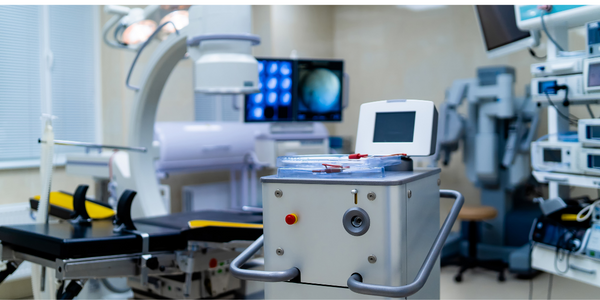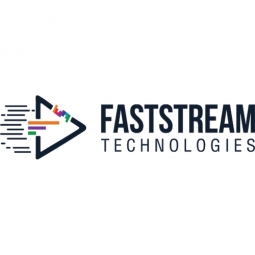
技术
- 传感器 - 其他
适用行业
- 医疗保健和医院
适用功能
- 采购
用例
- 结构健康监测
服务
- 云规划/设计/实施服务
挑战
设计并开发了一种用于感应的ASIC ,可与隐形眼镜直接设置。可以通过 ASIC 进行数字化的 MEMS 传感器正在读取评估结果并将其传输回记录仪,该记录仪与使用负载调制技术为设备供电的射频链路相同。通过使用 0.35µm 工艺, Faststream可以在有限的功率预算内以低成本在单个芯片上集成功率捕获和调节、RF 信号、高线性度 ADC 和数字控制功能。
解决方案
Faststream Technologies 监管 Sensimed 的整个 ASIC 生命周期,包括不同批量生产的设计、原型设计、工业化和供应链。在制造过程中,凸块裸片直接连接到透镜内的铜迹线上,将其连接到天线和 MEMS 阵列。
使用这些过程,Faststream 可以在保持线圈天线的功率资源范围内感知对高 ENOB 过程的需求。
关键技术统计
- 板载列并行ADC,具有低噪声采样结构和温度变化补偿。
- 用于电源和数据的 13.56 MHz 松散耦合电感链路。
- 通过负载调制进行通信。
- 具有结构良好的整流的 CMOS 执行避免了对肖特基二极管的需求。
- 惠斯通电阻桥上的传感器读数、模数转换和数据。
- 嵌入偏移和斜率校正技术。
- 通过磁性链接输入和输出。
- 低于 5 -10 µV 的 ADC。
- 范围广泛的传入无线能量。
- 通过无线传输电力和数据。
运营影响
数量效益

Case Study missing?
Start adding your own!
Register with your work email and create a new case study profile for your business.
相关案例.

Case Study
Hospital Inventory Management
The hospital supply chain team is responsible for ensuring that the right medical supplies are readily available to clinicians when and where needed, and to do so in the most efficient manner possible. However, many of the systems and processes in use at the cancer center for supply chain management were not best suited to support these goals. Barcoding technology, a commonly used method for inventory management of medical supplies, is labor intensive, time consuming, does not provide real-time visibility into inventory levels and can be prone to error. Consequently, the lack of accurate and real-time visibility into inventory levels across multiple supply rooms in multiple hospital facilities creates additional inefficiency in the system causing over-ordering, hoarding, and wasted supplies. Other sources of waste and cost were also identified as candidates for improvement. Existing systems and processes did not provide adequate security for high-cost inventory within the hospital, which was another driver of cost. A lack of visibility into expiration dates for supplies resulted in supplies being wasted due to past expiry dates. Storage of supplies was also a key consideration given the location of the cancer center’s facilities in a dense urban setting, where space is always at a premium. In order to address the challenges outlined above, the hospital sought a solution that would provide real-time inventory information with high levels of accuracy, reduce the level of manual effort required and enable data driven decision making to ensure that the right supplies were readily available to clinicians in the right location at the right time.

Case Study
Gas Pipeline Monitoring System for Hospitals
This system integrator focuses on providing centralized gas pipeline monitoring systems for hospitals. The service they provide makes it possible for hospitals to reduce both maintenance and labor costs. Since hospitals may not have an existing network suitable for this type of system, GPRS communication provides an easy and ready-to-use solution for remote, distributed monitoring systems System Requirements - GPRS communication - Seamless connection with SCADA software - Simple, front-end control capability - Expandable I/O channels - Combine AI, DI, and DO channels

Case Study
Driving Digital Transformations for Vitro Diagnostic Medical Devices
Diagnostic devices play a vital role in helping to improve healthcare delivery. In fact, an estimated 60 percent of the world’s medical decisions are made with support from in vitrodiagnostics (IVD) solutions, such as those provided by Roche Diagnostics, an industry leader. As the demand for medical diagnostic services grows rapidly in hospitals and clinics across China, so does the market for IVD solutions. In addition, the typically high cost of these diagnostic devices means that comprehensive post-sales services are needed. Wanteed to improve three portions of thr IVD:1. Remotely monitor and manage IVD devices as fixed assets.2. Optimizing device availability with predictive maintenance.3. Recommending the best IVD solution for a customer’s needs.

Case Study
HaemoCloud Global Blood Management System
1) Deliver a connected digital product system to protect and increase the differentiated value of Haemonetics blood and plasma solutions. 2) Improve patient outcomes by increasing the efficiency of blood supply flows. 3) Navigate and satisfy a complex web of global regulatory compliance requirements. 4) Reduce costly and labor-intensive maintenance procedures.

Case Study
Harnessing real-time data to give a holistic picture of patient health
Every day, vast quantities of data are collected about patients as they pass through health service organizations—from operational data such as treatment history and medications to physiological data captured by medical devices. The insights hidden within this treasure trove of data can be used to support more personalized treatments, more accurate diagnosis and more advanced preparative care. But since the information is generated faster than most organizations can consume it, unlocking the power of this big data can be a struggle. This type of predictive approach not only improves patient care—it also helps to reduce costs, because in the healthcare industry, prevention is almost always more cost-effective than treatment. However, collecting, analyzing and presenting these data-streams in a way that clinicians can easily understand can pose a significant technical challenge.




